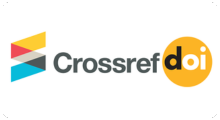Perception of Faculty Regarding Proposed New Accreditation Norms by the National Assessment and Accreditation Council (NAAC)
DOI:
https://doi.org/10.11594/ijmaber.04.09.10Keywords:
Accreditation, Faculty perspective, NAAC, New NormsAbstract
The National Education Policy (NEP) 2020 underscores the importance of accreditation and introduces the “National Accreditation Council” as its overarching body. The NEP envisions a 15-year phased approach, emphasising graded accreditation and institutional autonomy, aiming for all higher education establishments in India to evolve into self-governing entities focused on innovation and excellence. The National Assessment and Accreditation Council (NAAC) has formulated new guidelines, enabling universities and colleges operational for at least one academic year to apply for provisional accreditation. These guidelines intend to widen the scope of accreditation. Unlike the previous requirement that mandated institutions to be at least six years old or to have graduated two student cohorts for NAAC application, the new approach led to a limited number of institutions seeking accreditation due to low application rates. This article examines the viewpoints of 400 faculty members from Higher Educational Institutions in Maharashtra on whether the proposed norms will enhance the quality standards of these institutions. The faculty members collectively believe that the anticipated norms are unlikely to improve the existing quality standards of Higher Educational Institutions significantly.
Downloads
References
Almarghani, E.M. and Mijatovic, I. (2017), “Factors affecting student engagement in HEIs-it is all about good teach-ing”, Teaching in Higher Education, Vol. 22 No. 8, pp. 940-956, doi: 10.1080/13562517.2017.1319808.
Alreck P.L. and Settle R.B (2003). The Survey Research Handbook. McGraw-Hill Educa-tion. London.
Augusti, G. (2005), “Trans-national recognition and accreditation of engineering educa-tional programmes in Europe: recent de-velopments”, European Journal of Engi-neering Education, Vol. 30 No. 4, pp. 417-422, doi: 10.1080/03043790500212518.
Cheng, N.S. (2015), “A comparison of compli-ance and aspirational accreditation mod-els: recounting a university’s experience with both a Taiwanese and an American accreditation body”, Higher Education, Vol. 70 No. 6, pp. 1017-1032, doi: 10.1007/s10734-015-9880-z.
Crick, T., Davenport, J.H., Hanna, P., Irons, A., Pearce, S. and Prickett, T. (2020), “Reposi-tioning BCS degree accredita-tion”, ITNOW, Vol. 62 No. 1, pp. 50-51, doi: 10.1093/itnow/bwaa023.
Govindara-jan, V. and Anthony, R.N. (1998), Management Control Systems, Irwin McGraw-Hill.
Jaber, M.A. and Al Batsh, M.W. (2016), “Jorda-nian experience in accreditation and quality assurance in HEIs”, US-China For-eign Language, Vol. 14 No. 4, pp. 312-327, doi: 10.17265/1539-8080/2016.04.007.
Jolly, A.M. and Mahieu, L. (2016), “How ac-creditation agencies can help the neces-sary changes of HEIs towards sustainable development practices”, International Journal of Engineering Pedagogy (IJEP), Vol. 6 No. 1, pp. 29-34, doi: 10.3991/ijep.v6i1.5336.
Kumar, A., Brar, V., Chaudhari, C., & Raibagkar, S. S. (2022) (2022). Discrimination against private-school students under a special quota for the underprivileged: a case in India. Asia Pacific Education Re-view. Article in Press, Article online 10 December 2022. DOI: https://doi.org/10.1007/s12564-022-09815-z
Kumar, A., Gawande, A., Agarwal, A., Kale, S., Brar, V. & Raibagkar, S. (2023). Sealing the gaps: enhancing quality control in business school dissertations. Quality As-surance in Education. Article in Press, Article online 15 May 2023. DOI: https://doi.org/10.1108/QAE-12-2022-0207
Kumar, A., Gawande, A. and Raibagkar, S. (2022), “Quality complacency in Indian higher education institutions between the second and third cycles of accredita-tion”, Quality Assurance in Education, Vol. ahead-of-print No. ahead-of-print. https://doi.org/10.1108/QAE-01-2022-0019
National Assessment and Accreditation Coun-cil (2021a), “NAAC – Assessment and ac-creditation”, available at: https://assessmentonline.naac.gov.in/pub-lic/index.php/hei_dashboard (accessed 15 December 2021).
Ordonez, V. and Ordonez, R.M. (2009), “Ac-creditation in the Philippines: a case study”, In Higher Education in Asia/Pacific, Palgrave Macmillan, New York, NY, pp. 201-215 doi: 10.1057/9780230100466_14.
Stu-ra, I., Gentile, T., Migliaretti, G. and Vesce, E. (2019), “Accreditation in higher educa-tion: Does disciplinary matter?”, Studies in Educational Evaluation, Vol. 63, pp. 41-47, doi: 10.1016/j.stueduc.2019.07.004.
Suchanek, J., Pietzonka, M., Künzel, R.H. and Futterer, T. (2012), “The impact of accredi-tation on the reform of study pro-grammes in Germany”, Higher Education Management and Policy, Vol. 24 No. 1, pp. 1-24.
Tran, N.D., Nguyen, T.T. and Nguyen, M.T.N. (2011), “The standard of quality for HEIs in Vietnam: a step in the right direc-tion?”, Quality Assurance in Education, Vol. 19 No. 2, pp. 130-140, doi: 10.1108/09684881111125032
Downloads
Published
Issue
Section
License
Authors who publish with this journal agree to the following terms:
Authors retain copyright and grant the journal right of first publication with the work simultaneously licensed under a Creative Commons Attribution License that allows others to share the work with an acknowledgement of the work's authorship and initial publication in this journal.
Authors are able to enter into separate, additional contractual arrangements for the non-exclusive distribution of the journal's published version of the work (e.g., post it to an institutional repository or publish it in a book), with an acknowledgement of its initial publication in this journal.
Authors are permitted and encouraged to post their work online (e.g., in institutional repositories or on their website) prior to and during the submission process, as it can lead to productive exchanges, as well as earlier and greater citation of published work (See the Effect of Open Access).



















